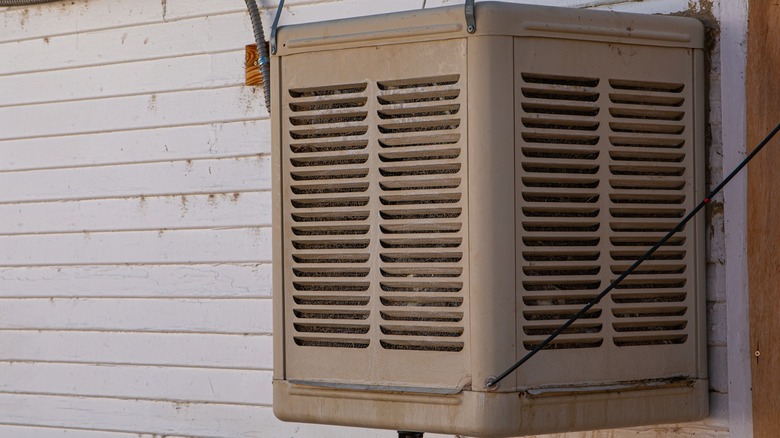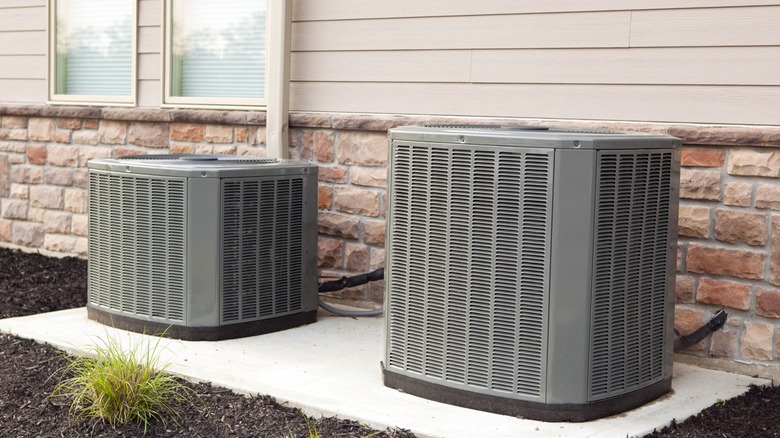
fizkes/Shutterstock
By Ron King/
As temperatures begin to rise, signaling the change in seasons from spring to summer, many of us seek the comfort of artificially chilled air inside a building. Any unit capable of cooling an entire home or business during the heat of summer will require an investment to cover the up-front cost and potential ongoing maintenance. However, there are some budget-friendly options that can help you beat the summer heat.
Before throwing down any hard-earned cash on a solution, it’s a good idea to understand the strengths and weaknesses of the options available in today’s marketplace. The most popular choices for reducing the air temperature in your home or business are swamp coolers (also called evaporative coolers to avoid the swampy connotation) and the more conventional A/C, or air conditioning unit, both of which have a large portion of the system sitting outside.
Other solutions for smaller spaces include devices like the rotary-compressor Zero Breeze portable air conditioner or IcyBreeze, as seen on Shark Tank, which uses ice water stored in a cooler as a source for its cold air. We’ll keep our focus on the more substantial cooling provided by evaporative swamp coolers and A/C units for now.
How does an evaporative swamp cooler work?

Mitch Cox Photo/Shutterstock
According to Energy.gov, swamp coolers (the term we’ll use from here on out to simplify matters) draw outside air through a series of water-saturated pads before blowing the air indoors. As the hot air passes through the wet pad structure, heat is absorbed by the evaporating water. Under ideal circumstances, the swamp cooler’s evaporative effect can cool the outside air by as much as 40 degrees Fahrenheit.
Drawbacks to using a swamp cooler include requiring air to escape the structure they’re cooling, be it a house, office building, etc., as the chilled air is brought inside by providing constant ventilation. Another downside to using a swamp cooler in some parts of the country is the increased humidity it adds to the incoming air. In drier climates, the additional humidity is often a benefit.
It’s important to note that swamp coolers perform at their best in climates with low relative humidity. There’s little question that users in the Southwest United States see more cooling effects from a swamp cooler than those in the Southeast part of the country.
The good news is that if you’re in a dry climate that allows swamp coolers to be effective, they are considerably less expensive, both upfront and long-term, than a conventional air conditioning unit. The U.S. Department of Energy says that for units capable of cooling similar-sized spaces, swamp cooler installation is about half the cost and consumes only about a fourth of the electricity compared to a conventional central air conditioning unit.
How is a conventional A/C unit different from a swamp cooler?

Don Nichols/Getty Images
Most major air conditioner brands offer central air conditioning units; some sell the increasingly popular (especially for cooling small spaces) mini-split; and others offer the venerable window-unit A/C. While the style, arrangement, and efficiency of these units differ, they share the same process for turning the hot air inside a building into a cooler, drier environment.
The main difference that you’ll notice between using a swamp cooler and an A/C unit is the relative humidity of the air-conditioned air. While a swamp cooler uses water evaporation to lower the temperature, imparting moisture into the air while doing so, an A/C blows the warm air across chilled pipes to lower its temperature. In the process, humidity is removed from the environment being cooled. In much the same way a container holding a cold drink collects moisture on its exterior, humidity condenses as the cooled air passes over the A/C’s cooling structures. More humidity is extracted as the A/C recirculates the internal air, as opposed to the swamp cooler’s design, which continuously pulls in fresh air from the outside.
Since an A/C recirculates air from the building’s interior, there’s no need to provide an exterior vent, as there is with a swamp cooler. People in dry climates who are accustomed to using swamp coolers won’t necessarily see that as an advantage. Those only familiar with A/C, however, may view a partially open window as inefficient.
Which is better, an A/C unit or a swamp cooler?

Simpleimages/Getty Images
People in any climate can enjoy the cooler air an A/C unit provides, while only those in dry climates will benefit from utilizing a swamp cooler. That leads to more people using A/C units overall, making it profitable for companies to invest in the technology and develop increasingly efficient and quiet systems.
On the other hand, a swamp cooler’s capacity to reduce the air temperature is limited by the relative humidity of the outside air. The moisture content of humid air doesn’t allow as much evaporation as dry air, even if it’s at the same temperature. That fundamental limitation and lower appeal to the general public leaves little incentive for companies to advance swamp cooler technology.
Swamp coolers have lower installation, maintenance, and operating costs. A/C units often require installation and service by licensed HVAC technicians, whereas DIY enthusiasts can install and maintain swamp coolers under most conditions. An A/C unit uses a powerful compressor to chill and pump refrigerant through its system, thus using far more electricity than the swamp cooler’s water pump.
One reason only licensed HVAC technicians can install and service A/C units is the harmful effect the refrigerant has on the environment. Some refrigerants are known to be «a potent greenhouse gas,» while others are listed as «Ozone-Depleting,» according to the EPA. While newer refrigerants are less harmful, they can still leak into the atmosphere, doing damage and adding to the unit’s maintenance costs. Swamp coolers, on the other hand, use water and, occasionally, a little soap for cleaning.